 Image search results - "villa" Image search results - "villa" |

Bird's eye view of Shirakawa-go from Ogimachi Castle ruins.
|
|

Side view of Wada-ke House
|
|

Shirakawa-go is also a National Important Traditional Townscape Preservation District (重要伝統的建造物群保存地区).
|
|

Path to Wada House entrance
|
|

Close-up of Ogimachi
|
|

Main house on left and latrine on right with large vats to gather fertilizer.
|
|
|

Main house with a recently rethatched roof, making it look very smooth.
|
|

Shirakawa-go 白川郷
|
|

Wada House, Shirakawa-go
|
|
|
|
|
|

Gable openings let light and air come through the attic to foster silkworms.
|
|

A small stream beside the house helps to melt the snow falling off the roof.
|
|
|
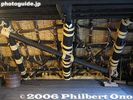
Underside of roof made of an A-frame truss structure
|
|

The thatched roof is replaced every 30 years. Every spring, 6 or 7 thatched roofs are replaced in Shirakawa-go.
|
|

Omatsuri is actually a place name. The small settlement has a lodge and restaurant.
|
|

Bus to Taba. The bus runs from Okutama Station in Tokyo. It is the only public transportation link with the village.
|
|

Bus going to Hinohara from Musashi-Itsukaichi Station. Takes 30 min.
|
|

Area around entrance to Hossawa Falls
|
|

Bus stop for Kichijoji Falls near central Hinohara.
|
|
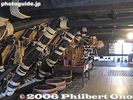
The bottom ends of these beams are pegged into a point (komajiri) resting on another cross beam. Wada House, Shirakawa-go
|
|

It costs several million yen and a small army of workers to replace the thatch. The cost is subsidized by the town, prefecture, and national government.
|
|

Where silkworms were raised to make silk cocoons.
|
|

Omatsuri bus stop for Okutama.
|
|

I was in Okutama and noticed that the bus goes on to Tabayama village in neighboring Yamanashi. I got really curious and rode the bus to Tabayama. This is central Tabayama.
|
|

Entrance to Hossawa Falls (free admission)
|
|

To Kichijoji Falls
|
|

Welcome to Hinohara village.
|
|
|

Omatsuri bus stop for Taba.
|
|

When I walked around, my planned 20-min. stay turned into a 2-hour walking tour of this pacifying place, full of mountains and a clear river. A delightful discovery. Suigen Park
|
|

Signboard showing Hinohara's waterfalls
|
|

Explanation sign
|
|

Hinohara Village Office. For a small village, this is a grand building. 檜原村役場
|
|

Slats on the attic floor to enable smoke and soot from the hearth to reach the attic.
|
|
|
|

On the side of the road near the bus stop, there is a trail going down to Tama River.
|
|

Completely surrounded by mountains with a clear river running in the middle.
|
|

Trail to Hossawa Falls
|
|

Down to Kichijoji Falls, right next to the highway.
|
|

Drawing of Hinohara Castle
|
|

Straw rope tie the large beams to form a truss for the roof.
|
|
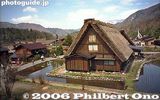
Shirakawa-go 白川郷
|
|

A suspension bridge over the river.
|
|

A few bridges span the river.
|
|

Trail to Hossawa Falls
|
|

Gorge
|
|

Inside Hinohara Village Office
|
|
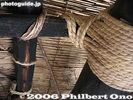
Another rope made of a crushed tree branch to tie smaller beams. It tightens as it dries.
|
|
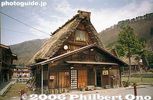
Photo gallery
|
|

Tama River as seen from the bridge.
|
|
|

Trail to Hossawa Falls is very lush
|
|

Downstream of falls
|
|

Hinohara Village Office has a coffee shop.
|
|
|

Tama River
|
|

Tama River, looks very inviting in summer.
|
|

Beware of falling rocks
|
|

Akikawa River below Kichijoji Falls, Hinohara, Tokyo
|
|

Made in Hinohara, displayed in the coffee shop.
|
|
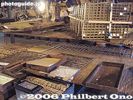
Implements to raise silkworms.
|
|

Restaurant
|
|
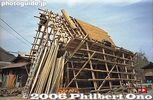
Rethatching a small storehouse.
|
|

Tama River, very quiet and peaceful.
|
|

Upriver as seen from the bridge.
|
|

It's a short trail, but very nature-rich
|
|

Kichijoji Falls 吉祥寺滝
|
|

Jam made in Hinohara.
|
|
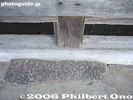
Foundation and pillars rest on stones. The beam is shaped to fit the stone.
|
|
|

Crystal clear water of Tama River
|
|
|
|
|

Kichijoji Falls 吉祥寺滝
|
|

The Village Office and coffee shop has a great view of the river.
|
|
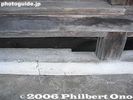
Two foundation beams interlock.
|
|
|

Crystal clear water of Tama River with fall leaves.
|
|
|

Small river below, fed by the waterfall
|
|

Kichijoji Falls 吉祥寺滝
|
|

Hinohara village manhole
|
|

Thatch repair work.
|
|
|
|
|

Trout fishing ponds for customers in warmer months.
|
|

Monuments
|
|
|
|

Hinohara Village Tourist Info Office
|
|

These photos were taken in Feb. Probably scenic in fall.
|
|

Riverside fishing ponds
|
|

This is not the waterfall.
|
|

Upstream Kichijoji Falls
|
|

Inside Hinohara Village Tourist Info Office
|
|
|
|
|

Mountain with a patch of green.
|
|

Path to Otaki Waterfalls 雄滝
|
|

Picnic pavilion near the waterfall.
|
|

Kichijoji Falls consist of three small waterfalls. Hinohara, Tokyo 吉祥寺滝
|
|

Main intersection in central Hinohara
|
|
|

Bus stop. Notice the monkey crossing the road.
|
|

Waterwheel 水車
|
|

Sign in English explaining the rules (take home your trash, don't dirty the water, etc.)
|
|
|

Kichijoji Falls, Hinohara, Tokyo
|
|

There were many hikers on the bus, and I wondered where they were going, so I followed them.
|
|
|

Finally, a sign of the waterfall.
|
|
|

Central Hinohara called Honshuku 本宿
|
|
|
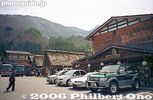
Tourist Information Office in the center of town.
|
|

Numerous monkey poop along the road.
|
|

Waterwwheel (not working)
|
|

There it is. Notice the smaller falls at the top.
|
|
|

Bus from Musashi-Itsukaichi Station.
|
|
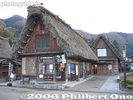
Tourist Information Office
|
|
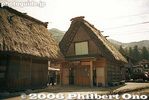
Restroom behind the Tourist Information Office
|
|
|

Trail to waterfalls
|
|

Hossawa Falls, Hinohara, Tokyo
|
|

Upstream Akikawa River from the waterfalls
|
|

Akikawa River
|
|
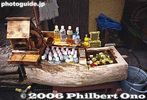
Cooling system
|
|

Pretty scenic area.
|
|

When I was walking here, I did not know there was a waterfall.
|
|

Base of Hossawa Falls
|
|

Highway next to Kichijoji Falls
|
|

Akikawa River
|
|

The area is part of the Chichibu-Tama National Park.
|
|

Path from above.
|
|

Hossawa Falls
|
|

Down to another scenic point near Kichijoji Falls
|
|

Banner at souvenir shop
|
|

Parking lot along the main road through the village.
|
|

Trail to Mt. Kumotori, Tokyo's tallest mountain. That's where the hikers were headed.
|
|
|
|

Hossawa Falls
|
|

Gorge near Kichijoji Falls
|
|

Farewell to Hinohara
|
|

Deai Bridge crossing the Shokawa River.
|
|
|

Trail to Mt. Kumotori
|
|

Waterfalls
|
|

Ice crystals and running water. Normally, the Hossawa waterfall freezes over in winter.
|
|

Crystal-clear water
|
|

Tama River
|
|

Otaki Waterfall
|
|

Ice crystals on rocks
|
|

Akikawa River
|
|

Deai Bridge
|
|

By coincidence, I found this man-made waterfall.
|
|

An observation deck is also provided.
|
|

Hossawa Falls, Hinohara, Tokyo
|
|

To Nakayama Falls 中山の滝
|
|

Shokawa River
|
|
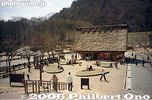
Tourist Info Office near the bus stop.
|
|
|

View from the observation deck
|
|
|

Nakayama Falls as seen from the road. 中山の滝
|
|
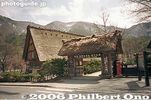
Entrance to the Gassho-zukuri Minka-en outdoor museum.
|
|

Waterfall
|
|
|

Hossawa Falls is one of Japan's 100 Famous Falls. 日本の滝百選
|
|

Nakayama Falls as seen from the road. 中山の滝
|
|
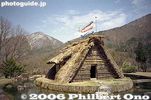
Gassho-zukuri Minka-en outdoor museum
|
|
|
|
|

The waterfall is actually a series of four falls, only two of which can be seen.
|
|

Nakayama Falls 中山の滝
|
|

Gassho-zukuri Minka-en outdoor museum
|
|
|
|
|

Total height of the falls is 60 meters, from the top falls not visible.
|
|
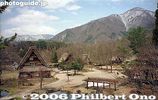
Gassho-zukuri minka houses slated for destruction were moved to this outdoor museum and saved.
|
|

Fishing pond
|
|

Monument saying "Thanks you for the pure water."
|
|
|

Riverside picnic pavilions
|
|

Trail back to the entrance
|
|
|

Picnic pavilion with charcoal grill (for the fish caught).
|
|

Made in Hinohara, konnyaku
|
|

Outdoor stage
|
|

Bridge with waterfall motif
|
|
|

Tennis courts with snow.
|
|

Akikawa River near the waterfall entrance
|
|

Fire hydrant
|
|

Fishing ponds
|
|

Akikawa River
|
|

Manhole in Shirakawa-go.
|
|

Camping bungalows
|
|

Akikawa River
|
|

Shirakawa Village Office
|
|
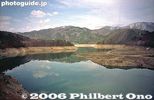
Dam reservoir
|
|

Camping bungalows along the river. For warmer months.
|
|

Akikawa River
|
|

Mihoro Dam, made only of rocks and clay. 131 meters high, 405 meters long.
|
|

Glorious Tama River
|
|
|
|

Honshuku, center of Hinohara
|
|

Scarecrow
|
|

Scarecrow
|
|

Inside Administrative building
|
|

Roadside waterwell
|
|
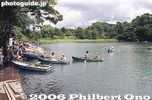
Goshikinuma is a chain of five colorful volcanic ponds. Pleasant hiking trails lead to the ponds. Part of the Bandai-Asahi National Park. Bishamon-numa Pond is the largest of the five and it has rental rowboats. 毘沙門沼
|
|

Taba bus stop
|
|
|

Taba bus garage
|
|

Colorful koi carp fish in Bishamon-numa Pond, Fukushima Pref. 毘沙門沼Bandai-Asahi National Park
|
|

Taba bus stop and bus garage
|
|

Bishamon-numa Pond, Fukushima Pref. Bandai-Asahi National Park 毘沙門沼
|
|

Bus to Okutama, Tokyo
|
|
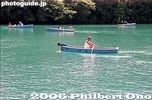
The color of the water is stunningly beautiful.
|
|
|
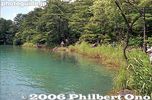
Nature trail to other Goshikinuma ponds.
|
|
|
|
|
|
|

Benten-numa Pond. 弁天沼
|
|

Benten-numa Pond, maximum depth 6 meters. 弁天沼Bandai-Asahi National Park
|
|
|

Aonuma Pond 青沼
|
|
|

Inawashiro Station 猪苗代駅
|
|

Akanko Ainu Kotan is an Ainu village lined with gift shops and Ainu attractions. The path still had dirt when I visited, but it's now completely cobblestones. 阿寒湖アイヌコタン
|
|

Akanko Ainu Kotan gift shop.
|
|

Akanko Ainu Kotan gifts.
|
|

Ainu home (no longer here) was also in the Ainu village. 阿寒湖アイヌコタン
|
|

Akanko Ainu Kotan Ainu village. 阿寒湖アイヌコタン
|
|

Adjacent to the Dotaku Museum is a replica of a Yayoi Period village. Yayoi Period (500 BC to 300 AD) is noted as when rice growing started in Japan.
|
|

These ancient abode were pretty much a hole in the ground with a roof over it.
|
|
|
|
|
|

Inside a Yayoi-Period grass shack.
|
|
|
|
|
|

The ceiling has square beams.
|
|
|
|